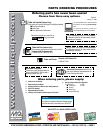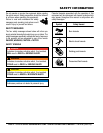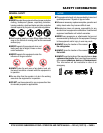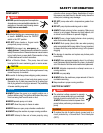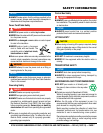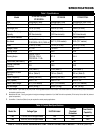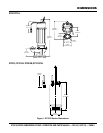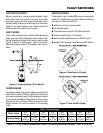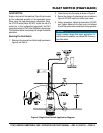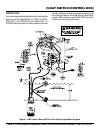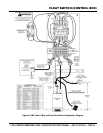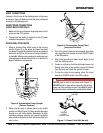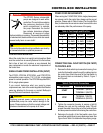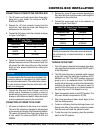
ST2010 SERIES SUBMERSIBLE PUMP • OPERATION AND PARTS MANUAL — REV. #3 (12/07/12) — PAGE 11
COMPONENTS
ST2010, ST2010A, ST2010B, ST2010CUL ST2010TCUL
6
5
2
3
1
4
7
8
9
Figure 2. Submersible Pump Components
Figure 2 shows the location of the basic components for
the ST2010 series submersible pumps. Listed below is a
brief description of each component.
1. Strainer Base — Made of chrome-plated steel which
is resistant to hardware corrosion. DO NOT pump
large objects or debris with this pump. This pump is
for pumping water only. Always place the strainer base
on a platform.
2. Volute/Impeller — Volute is constructed of cast iron
and impeller is made of cast ductile iron to minimize
wear and prolong service life.
3. Electric Motor — All ST2010 series submersible
pumps utilize a 60 Hz, single-phase, 1.0 HP electric
motor. The ST2010, ST2010A, ST2010CUL and
S-2010TCUL operate at 115 VAC while the ST2010B
operates at 230VAC. Consult with a licensed electrician
before connecting motor to a power source. Observe
all city and local safety codes.
4. Discharge Port — Connect a 2-inch hose to this port.
Remember to adequately support the discharge hose
to avoid stress on the pump.
5. AC Power Cable — This unit is supplied with an AC
power cable. Always check the cable for signs of wear.
NEVER use a defective power cable. Replace the cable
immediately if the cable is worn or defective.
6. Carrying Handle — Always carry the submersible
pump by its handle. NEVER carry the pump by its
power cord. Carrying or lifting the pump by the power
cord will cause undue stress on the cord and ultimately
the cord will become dislodged from the pump.
7. Thermal Overload Protection — This pump is
equipped with thermal overload protection device that
will shut down the motor in the event of high operating
temperatures. The motor will automatically restart once
the temperature returns to an acceptable operating
temperature.
8. Mechanical Oil Seal — This oil-filled seal provides
lubrication when running the pump dry. NEVER run
the pump dry. Running the pump dry will cause severe
damage to the pump.
9. Mechanical Oil Seal Plug — Remove this plug to
check and add hydraulic oil (Shell 32 or equivalent)
to the oil cavity. This oil protects the mechanical seal.
Oil cavity should be full enough to cover seal spring.



